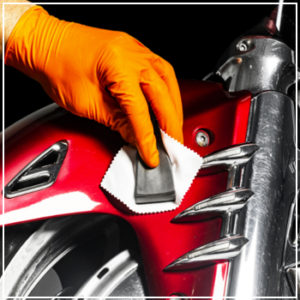
For many riders, their motorcycle is their most prized possession. As such, the last thing you want to see is rust on your bike. Rust forms when the vehicle’s steel components are exposed to a mixture of moisture and oxygen. Cold Northeastern winters and road salt can also speed up the process.
In addition to these factors, inefficient maintenance often creates a straightforward path for rust to attack metal. As you get ready to put your motorcycle away for the winter, consider the following points to avoid dealing with rust once spring arrives.
Rust in the Gas Tank
There’s a reason nearly every winterization guide recommends filling your gas tank before putting your bike in storage. If the tank is not kept full, condensation occurs. When moisture gets trapped inside, the metal interior begins to rust.
Ethanol gas, more corrosive than pure gasoline, also affects the metal in your tank after a certain point and is not recommended for long-term storage. As one common method, blend fuel additives or stabilizers into the ethanol to stave off potential corrosion in storage.
What could happen to your bike if the gas tank starts to rust?
- A rusted gas tank decreases the bike’s value – an issue if you plan to sell in the future.
- Rust affects how well the fuel flows through your motorcycle.
- Clogged filters and fuel lines, resulting in pressure buildup.
- Rust can start to circulate inside the engine, which impacts the amount of air mixing with fuel.
- If your bike’s tank is rusted beyond repair, finding a replacement tank isn’t always easy.
Poor Motorcycle Maintenance
Beyond key components like the chain and tank, rust can eat away at other motorcycle parts, which will then need to be replaced.
To combat this, regularly clean off your motorcycle, washing off dirt, debris and grease, as well as waxing and protecting the surface. Rather than hosing everything down, use a nylon- or soft-bristled brush to loosen up any debris. While doing this, check all parts for signs of rusting.
If you spot rust, remove it right away. Rust cleaners, sandpaper or another similar scrubber can assist with removing any surface damage, but don’t rub so hard that you take off the paint.
Once you’ve removed the rust, be sure to dry the bike before painting, waxing, polishing and lubricating the area to create a barrier against moisture.
How do you keep rust from forming on your bike? Head over to our Facebook page to share your maintenance tips.
